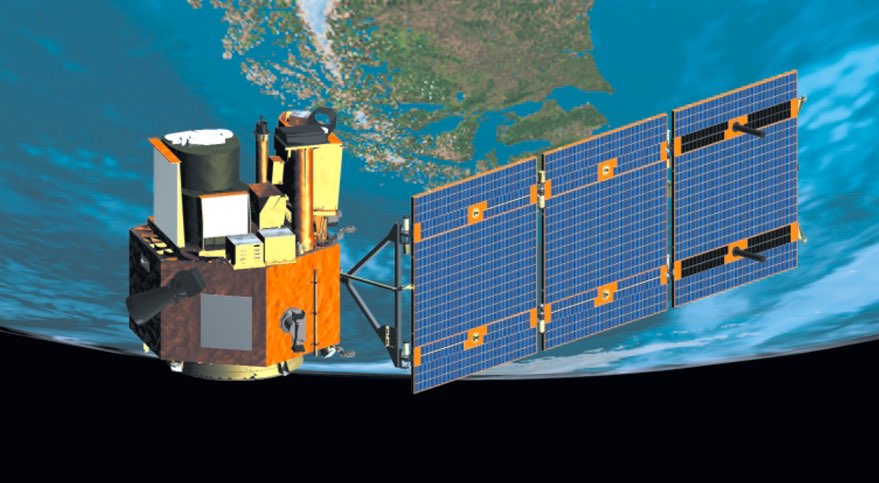Decommissioned Earth Science Satellite to Remain in Orbit for Decades

WASHINGTON — A NASA Earth science satellite whose mission is ending this week will remain in orbit through the middle of the century, far longer than the limit set by orbital debris mitigation guidelines.
NASA announced earlier this month that it was shutting down the Earth Observing 1 (EO-1) spacecraft on March 30. NASA launched the spacecraft in November 2000 as part of its New Millennium technology demonstration program, originally for a one-year mission.
NASA, in cooperation with several other agencies, extended the life of EO-1 several times, with a final decision in the 2015 senior review of extended NASA Earth science missions to terminate the mission. That decision was made in part on the precession of the spacecraft's orbit that made its data less useful. [Earth From Space: Classic NASA Photos]
As part of the decommissioning process, the spacecraft will drain its energy sources to avoid exploding, one of the standard practices adopted by U.S. government agencies to mitigate the creation of orbital debris.
EO-1, however, will not comply with another standard practice that calls for spacecraft in low Earth orbit to reenter within 25 years of the end of its mission. NASA, in a statement earlier this month about the decommissioning of EO-1, estimates the spacecraft will reenter in 2056, 39 years from now.
That extended post-mission lifetime in orbit stems from a decision made in 2007 to extend EO-1's mission. The project sought and received from NASA a waiver to those orbital debris mitigation guidelines, allowing it to use its remaining fuel to maintain its orbit at an altitude of about 700 kilometers rather than lower its orbit to reduce its orbital lifetime.
The project argued that the data EO-1 provided was worth extending its mission. "EO-1 is currently producing good science supporting NASA's Earth Science Objectives and the national Earth Observing system," project officials stated in an October 2007 document requesting the waiver. An extended mission, they argued, would also support what was then known as the Landsat Data Continuity Mission, later named Landsat 8 and launched in 2013.
Get the Space.com Newsletter
Breaking space news, the latest updates on rocket launches, skywatching events and more!
The analyses of the spacecraft's orbit included in the waiver request noted that the extension would keep the spacecraft in orbit far longer that mandated by orbital debris mitigation guidelines. The orbital lifetimes varied significantly, though, based on the model of solar activity used: a more active sun expands the upper atmosphere and increases drag on orbiting spacecraft, accelerating their decay.
Models used in the 2007 analysis projected far lower levels of solar activity than those in a similar study five years earlier. That meant that, even in cases where the spacecraft used its remaining propellant available at the time to lower its orbital perigee to about 600 kilometers, it could remain in orbit until mid-century, which would remain in violation of the debris mitigation standards.
The project, in its waiver request, concluded that extending the mission would give the spacecraft a post-mission orbital lifetime of 32 years. The reentry of the spacecraft itself, it added, did not pose a risk to people or property on the ground, with almost all spacecraft components expected to burn up in the atmosphere. NASA approved the waiver within two weeks of its submission.
Both the observations of the Earth provided by EO-1, as well as technologies demonstrated for use on other spacecraft, were worth the extended mission. "EO-1 has changed the way spectral Earth measurements are being made and used by the science community," said Betsy Middleton, EO-1 project scientist at NASA Goddard, in a statement.
However, EO-1 mission had been criticized in some senior reviews for limited scientific benefit from the data provided by its instruments. The 2015 report noted that the senior review panel "was disappointed that the EO-1 team continued to emphasize EO-1's ability to acquire rapid imagery and potential to test future instruments rather than provide evidence of the scientific use and specific users for EO-1 data as requested."
"The mission continues to operate as a technology demonstration project but desires to be funded and considered as supporting science, yet limited contribution to the NASA Earth science mission was provided," the same report later stated, complaining that EO-1 project members were "unresponsive" to criticisms from prior senior reviews about the documentation and distribution of data products from the mission.
This story was provided by SpaceNews, dedicated to covering all aspects of the space industry.
Join our Space Forums to keep talking space on the latest missions, night sky and more! And if you have a news tip, correction or comment, let us know at: community@space.com.

Jeff Foust is a Senior Staff Writer at SpaceNews, a space industry news magazine and website, where he writes about space policy, commercial spaceflight and other aerospace industry topics. Jeff has a Ph.D. in planetary sciences from the Massachusetts Institute of Technology and earned a bachelor's degree in geophysics and planetary science from the California Institute of Technology. You can see Jeff's latest projects by following him on Twitter.










